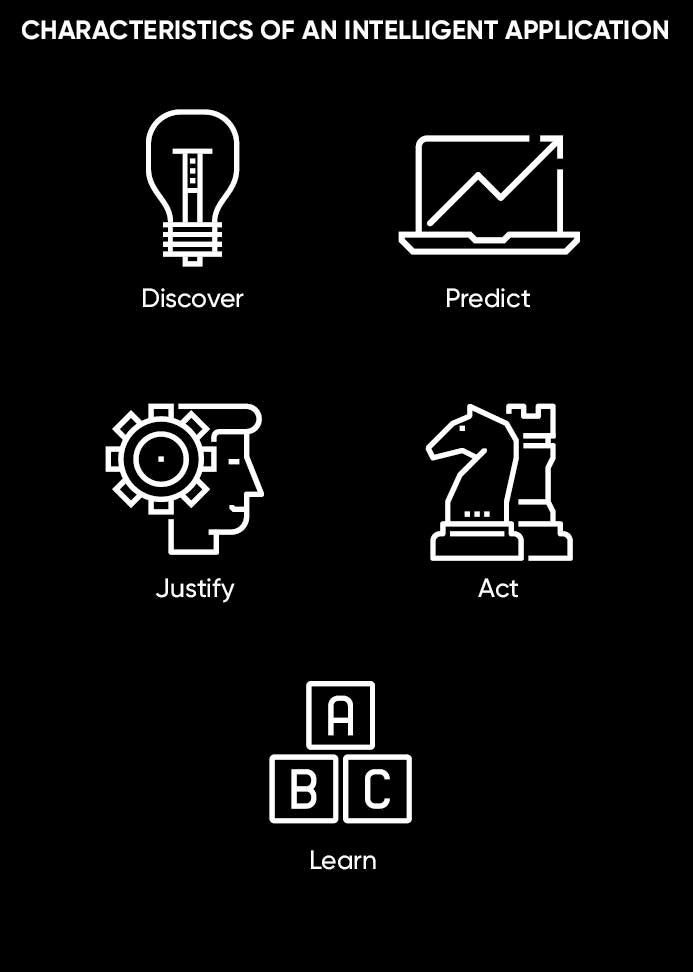Buoyed by a decade-long run that has seen plummeting storage costs and massive gains in compute power, enterprises have the necessary ingredients to make intelligence a reality.
The question before enterprises today is not whether to become intelligent, it is a question of how and how fast. Every business will be an intelligent business in the same way every enterprise is a digital enterprise. If they don’t become intelligent, they will simply cease to exist.
To achieve intelligence, enterprises need to adopt and deploy an intelligent application strategy while simultaneously preparing the organisation to scale that intelligence. A strategy built around intelligent applications allows enterprises to gain experience, show business value and build a framework for repeatability.
The key, however, is to build truly intelligent applications. To be truly intelligent requires each of the following five characteristics.
The ability to discover patterns in data without preconceived notions: this relies heavily on unsupervised machine-learning techniques. An unsupervised approach automatically selects algorithms and dramatically reduces risk by eliminating bias.
The ability to accurately predict depends on new data models trained on historical data. This is standard fare for many machine-learning algorithms, but is often mistaken for the entire field.
Intelligent applications must be able to justify their assertions. Black-box models cannot win mission-critical tasks if they cannot be explained to the business owner. Justification and transparency build trust.
Uncovered intelligence must also be accompanied by action. This means intelligence must feed other applications autonomously or end up in the subject matter experts’ workflow.
Finally, intelligent applications are designed to detect and react as the data evolves. An intelligent system is one that is always learning.
By building intelligent applications that encompass all these characteristics, enterprises have a starting point. To scale that effort, however, requires additional considerations involving technology strategy and organisational transformation.
For example, organisations will often perform small-scale experiments with a subset of the components above. This creates a false sense of security for many enterprises. Wins executed against sterile data or in an operational vacuum are not likely to translate well when asked to scale to real-world scenarios like detecting cyber-criminals within billions of financial transactions, or tracking and mitigating global health epidemics. Building real-world applications will position an enterprise for longer-term success. This commitment to deployable intelligence shouldn’t come at the cost of speed, however. Enterprises that commit to fast timelines learn faster.
Intelligent systems will change how you perform certain business processes. Recognising this fact ahead of time will enable the enterprise to capitalise on the knowledge and to consolidate the wins, thereby building momentum for the future applications of intelligence. At the heart of a successful transformation sits a centre of excellence. This is where best practices are developed, process change is accelerated and prioritisations are made based on operational readiness, business need and other considerations.
The next generation of leadership will come from this centre of excellence. Staff it accordingly.
Every organisation should tailor its intelligence strategy to distinct business needs. In the coming years, every analytics company will claim to be an AI company. Such claims will make it difficult to distinguish truth from fiction, but the characteristics outlined to discover, predict, justify, act and learn should present a framework to assess their validity. That framework, coupled with an application-first approach, should help organisations to navigate these transformational changes.
For more information please visit www.ayasdi.com


